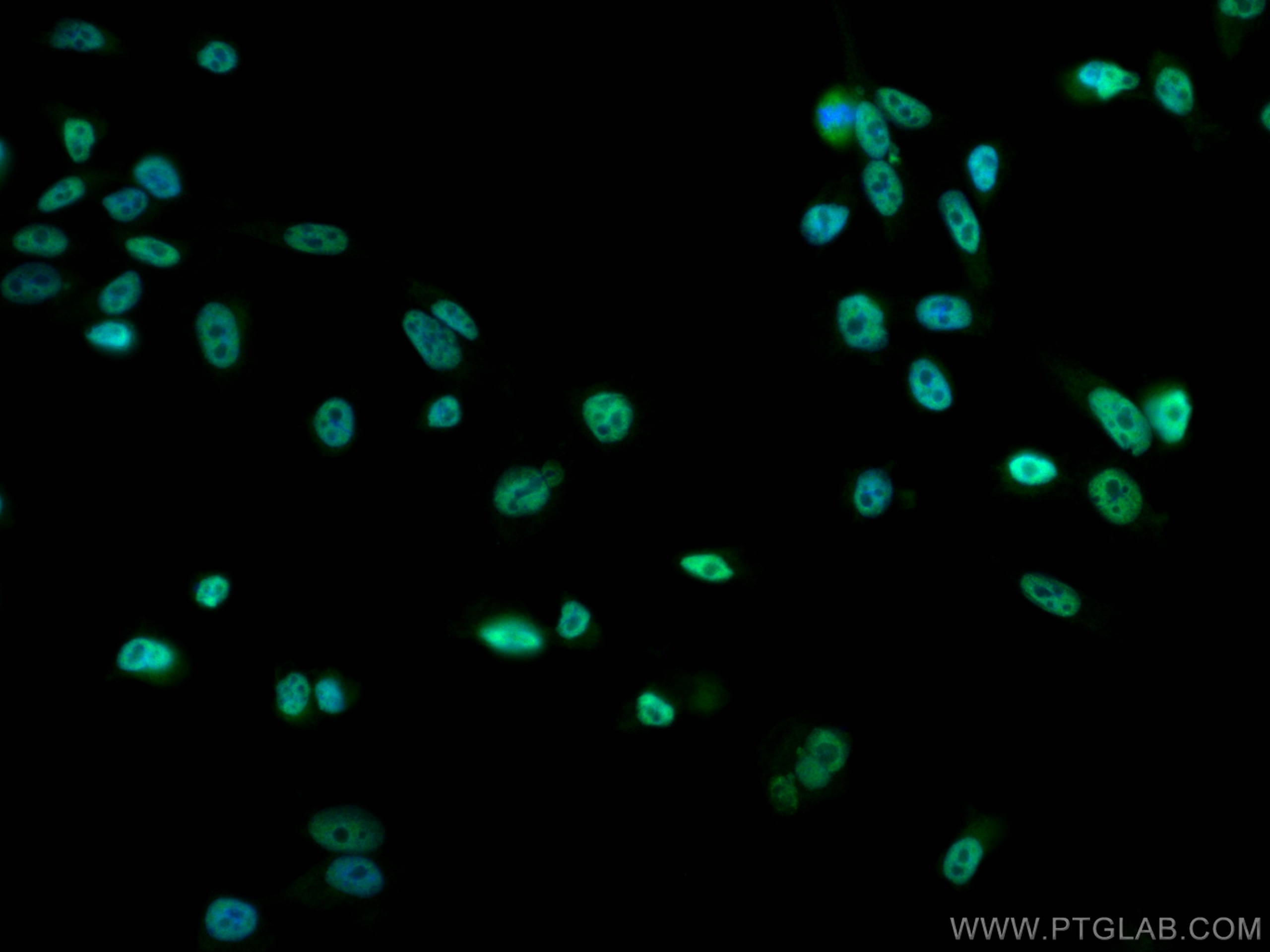HNRNPH3 Polyclonal antibody
HNRNPH3 Polyclonal Antibody for WB, IF/ICC, ELISA
Host / Isotype
Rabbit / IgG
Reactivity
human, mouse, rat
Applications
WB, IF/ICC, ELISA
Conjugate
Unconjugated
Cat no : 17674-1-AP
Synonyms
Validation Data Gallery
Tested Applications
| Positive WB detected in | HeLa cells, K-562 cells, PC-3 cells, mouse testis tissue |
| Positive IF/ICC detected in | PC-3 cells |
Recommended dilution
| Application | Dilution |
|---|---|
| Western Blot (WB) | WB : 1:2000-1:12000 |
| Immunofluorescence (IF)/ICC | IF/ICC : 1:200-1:800 |
| It is recommended that this reagent should be titrated in each testing system to obtain optimal results. | |
| Sample-dependent, Check data in validation data gallery. | |
Published Applications
| WB | See 1 publications below |
| IF | See 1 publications below |
Product Information
17674-1-AP targets HNRNPH3 in WB, IF/ICC, ELISA applications and shows reactivity with human, mouse, rat samples.
| Tested Reactivity | human, mouse, rat |
| Cited Reactivity | mouse |
| Host / Isotype | Rabbit / IgG |
| Class | Polyclonal |
| Type | Antibody |
| Immunogen | HNRNPH3 fusion protein Ag11611 相同性解析による交差性が予測される生物種 |
| Full Name | heterogeneous nuclear ribonucleoprotein H3 (2H9) |
| Calculated molecular weight | 331 aa, 35 kDa |
| Observed molecular weight | 35 kDa |
| GenBank accession number | BC039824 |
| Gene symbol | HNRNPH3 |
| Gene ID (NCBI) | 3189 |
| RRID | AB_2878425 |
| Conjugate | Unconjugated |
| Form | Liquid |
| Purification Method | Antigen affinity purification |
| Storage Buffer | PBS with 0.02% sodium azide and 50% glycerol pH 7.3. |
| Storage Conditions | Store at -20°C. Stable for one year after shipment. Aliquoting is unnecessary for -20oC storage. |
Protocols
| Product Specific Protocols | |
|---|---|
| WB protocol for HNRNPH3 antibody 17674-1-AP | Download protocol |
| IF protocol for HNRNPH3 antibody 17674-1-AP | Download protocol |
| Standard Protocols | |
|---|---|
| Click here to view our Standard Protocols |
Publications
| Species | Application | Title |
|---|---|---|
Dis Model Mech Loss of Ranbp2 in motor neurons causes the disruption of nucleocytoplasmic and chemokine signaling and proteostasis of hnRNPH3 and Mmp28, and the development of amyotrophic lateral sclerosis (ALS)-like syndromes. |




